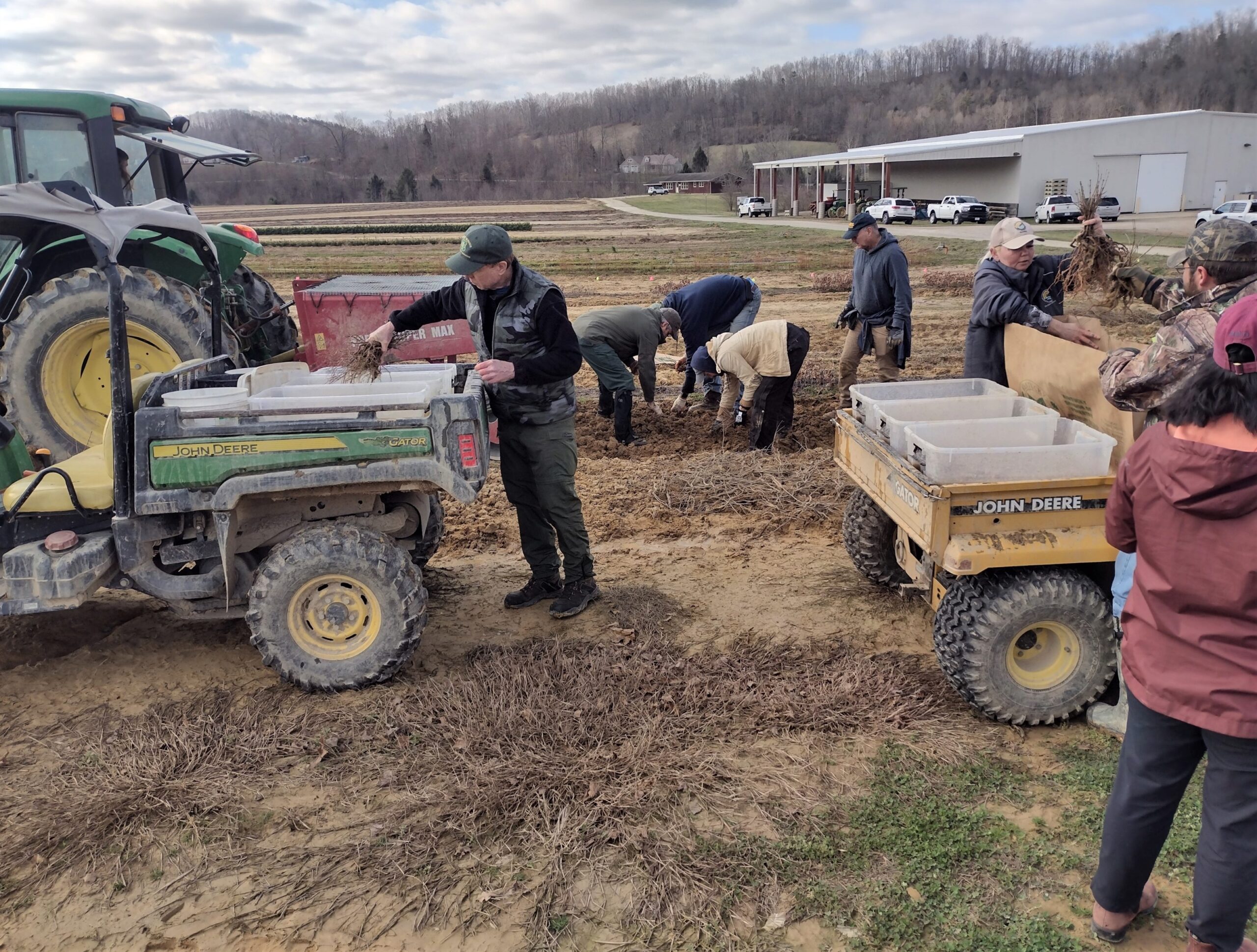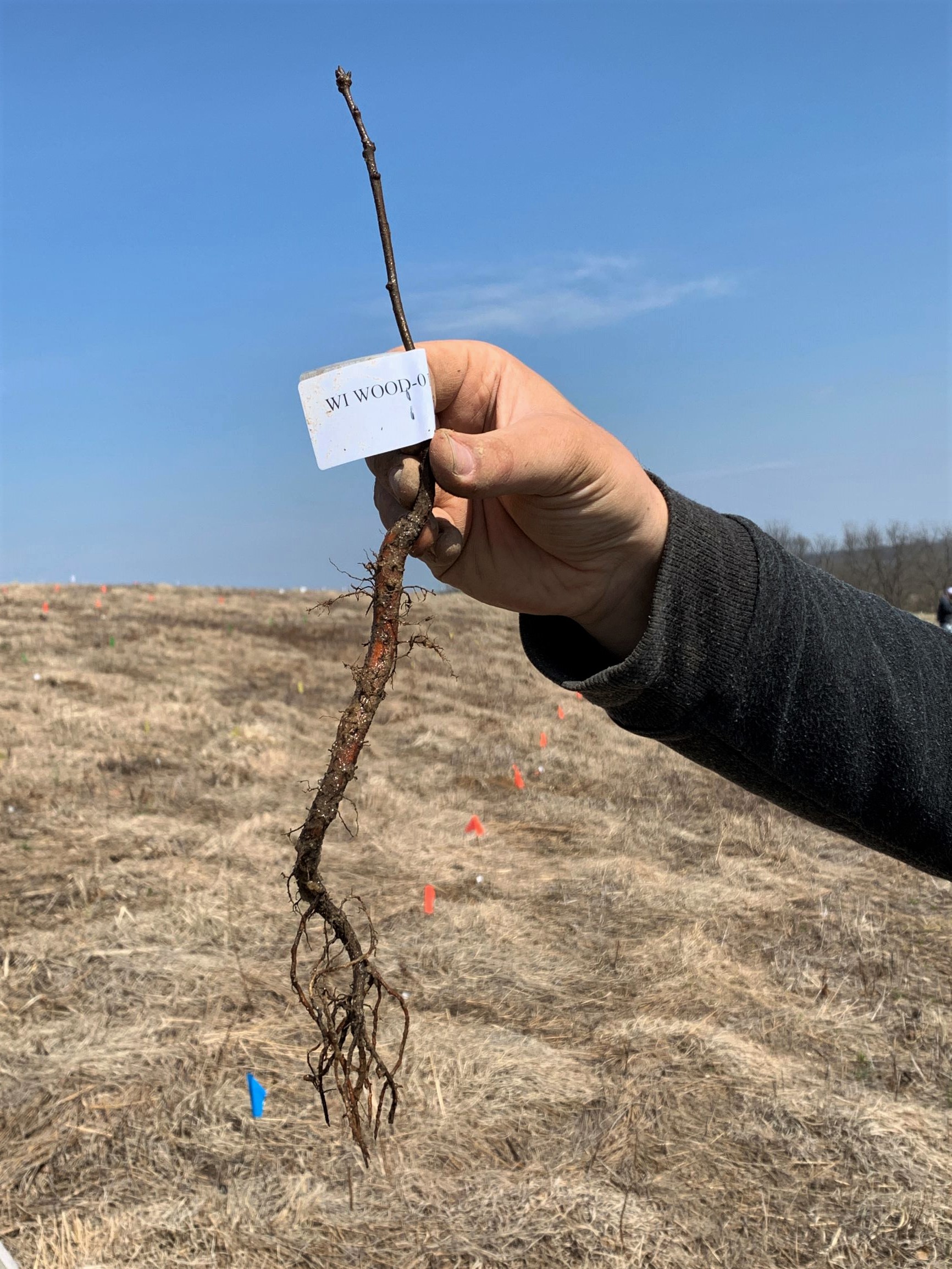
DNR reforestation team leader Joe Vande Hey assists his crew with planting white oak seedlings on a plot in Prairie du Chien.
In the fall of 2021, the Wisconsin Department of Natural Resources (DNR) reforestation team, along with their forestry peers and seasoned seed collectors, were tasked with collecting acorns from the best white oaks across the state as part of the ongoing efforts of the White Oak Initiative, a coalition working on the long-term sustainability of white oak for habitat, recreational activities and industries using oak for forest products.
In total, 39 half-gallon samples of white oak acorns were collected in Wisconsin and part of Iowa. The acorns were processed at Wisconsin state nurseries in late 2021, then shipped to the White Oak Genetics and Tree Improvement Program (WOGTIP) at the University of Kentucky in partnership with the White Oak Initiative.
Prime white oak acorns were collected from a total of 17 states participating in a white oak progeny test implemented by WOGTIP. This research aims to create genetically improved white oak seed orchards across the eastern U.S., including Wisconsin. These high-performing seed orchards will provide a reliable, known source of superior white oak seed for use in forest products industries, such as whiskey distilleries.

A team of volunteers harvests (or “lifts”) the white oak seedlings, dips their roots in gel to preserve freshness and packages them into insulated shipping bags.
Acorns collected from each of the participating states were planted at the Morgan County State Nursery in Kentucky, then lifted once they reached one year of growth. Pat Hromadka and Mark Caldwell of the DNR reforestation team traveled to Kentucky to assist with the seedling lifting process in late February 2023. Pat, Mark and other volunteers worked diligently to lift the oak seedlings in uncharacteristically warm February weather, carefully keeping track of all the different families of trees.
Each seedling was individually labeled with a tag that showed its origin state and county for accurate tracing of the plant’s maternal lineage. Geneticists carefully determined the best families to be planted in each test. The seedlings were packaged and shipped to the participating states to be replanted for progeny testing.
On April 27-28, 2023, the DNR reforestation team and a contracted crew planted their shipment of white oak seedlings in Grant and Clark counties. Nearly 1,700 seedlings were planted on a plot overlooking the intersection of the Mississippi and Wisconsin rivers near Prairie du Chien, and a similar number of seedlings were planted in the Clark County Forest, west of Neillsville. The Clark County planting was completed in partnership with the Clark County Forest staff and their county forest committee.

A white oak seedling ready to be planted with a tag showing its acorn originated from Wood County, Wisconsin.
White oak acorn collection and seedling planting were just the early steps in the years-long process of progeny testing. The white oak seedlings will be left to grow with periodic maintenance and measuring by the members of the reforestation team and the University of Kentucky as part of this progeny test.
After 10 to 15 years of growth and with all the data collected, the young oak trees will undergo evaluation to determine the most successful phenotype. Trees determined to be the most viable will be retained to become seed orchards, while the poor performers are rogued out. Simultaneously, the best mother trees will be identified from the data and grafted into genetically improved seed orchards. All data collected from the progeny tests in Wisconsin and the other participating states will be shared with the University of Kentucky and the White Oak Initiative.
For more information about the White Oak Initiative and how they plan to restore sustainability for white oak communities, read their assessment and conservation plan.
